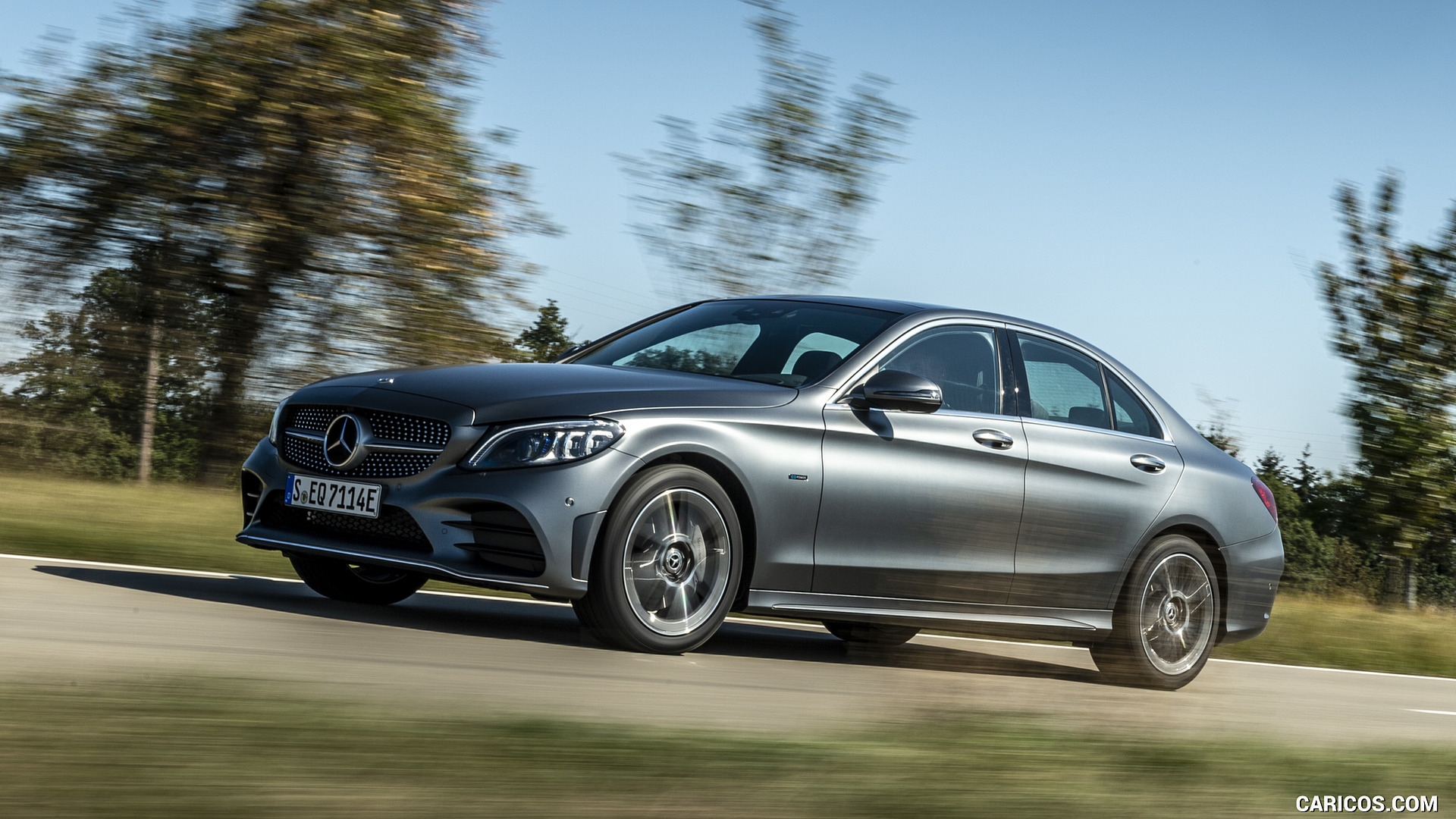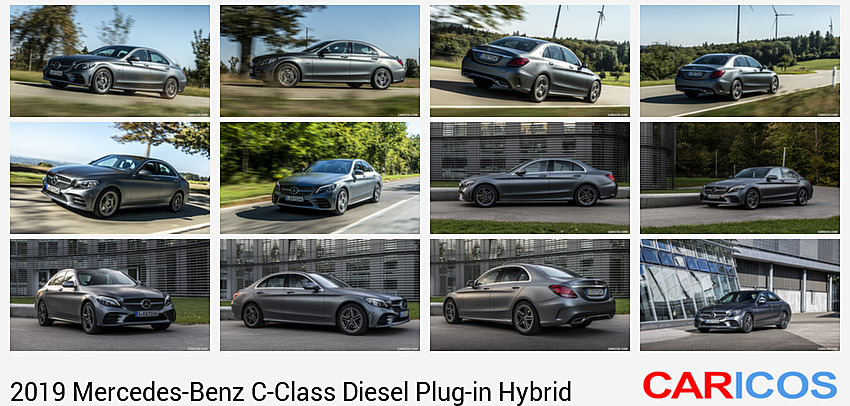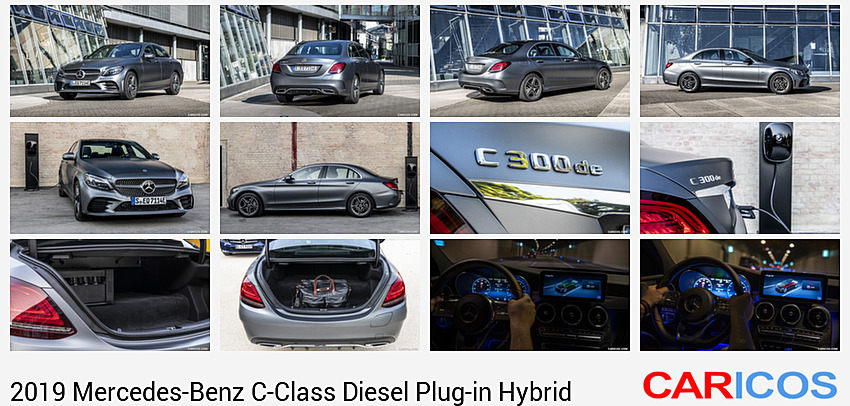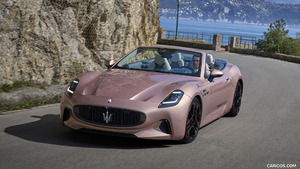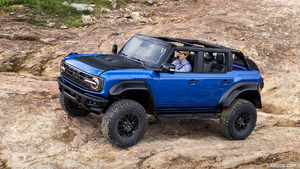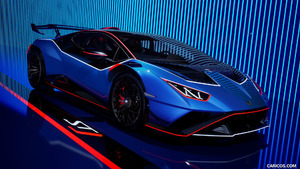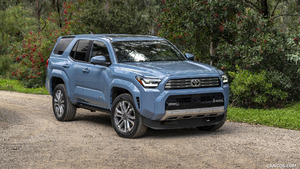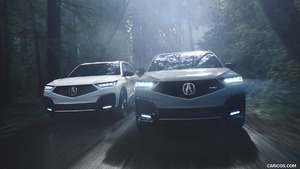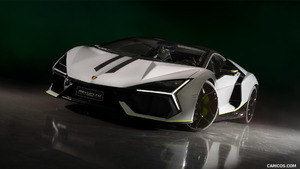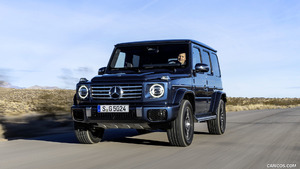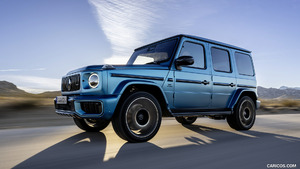Mercedes-Benz C 300 de
The C 300 de Saloon or Estate (combined fuel consumption 1.6 l/100 km, combined CO2 emissions 42 g/km, combined electrical consumption 19.1-18.7 kWh/100 km)1 is a particularly dynamic example of third-generation plug-in-hybrid technology from Mercedes-Benz. It is combined with the highly sophisticated four-cylinder diesel engine for the first time in the C-Class. The result is a vehicle that can cover a distance of up to 57 km (NEDC) on electric power alone with zero local emissions. What's more, the combination of diesel engine and electric motor offers outstanding motoring comfort, exceptional pulling power and high efficiency thanks to the 9G-TRONIC 9-speed hybrid transmission. Delivery of the first models is scheduled for mid-2019. There will naturally also be a plug-in-hybrid version with petrol engine based on the current C-Class.
The new plug-in diesel hybrid in the C-Class combines Mercedes-Benz's most sophisticated diesel engine with an externally chargeable hybrid system featuring a new lithium-ion battery capable of storing 13.5 kWh of energy. Thanks to a water-cooled on-board charger with a capacity of 7.4 kW, it can be charged from 10 to 100 percent SoC (State of Charge) in approx. 1.5 hours at a Mercedes-Benz Wallbox (see "Under the microscope: charging" section) if the full power is used. The same is possible in around five hours even at a conventional domestic power socket.
The current OM 654 four-cylinder diesel engine sends a rated output of 143 kW (194 hp) and a peak torque of 400 Nm to the latest-generation 9G-TRONIC 9-speed hybrid transmission. It has a compact integrated hybrid traction head with a 90 kW electric motor that provides 440 Nm of torque from a standing start. Together the engine and motor achieve a system output of up to 225 kW. Their combined torque is limited to a maximum of 700 Nm, available at just 1400 rpm.
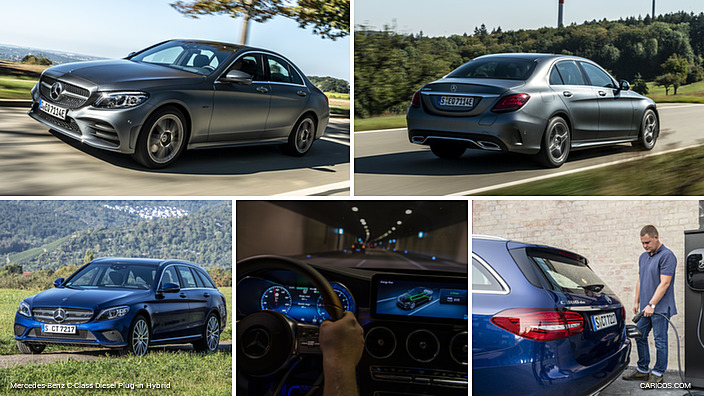 2019 Mercedes-Benz C-Class Diesel Plug-in Hybrid
2019 Mercedes-Benz C-Class Diesel Plug-in Hybrid
The third-generation hybrid technology's energy management is just as effortlessly superior as the acceleration offered by this immense torque. The anticipatory ECO Assist uses the data from all the driving assistance systems – such as the radar sensor, cameras and navigation system – and helps the driver to adopt an energy-saving and environmentally compatible driving style. The powertrain management calculates precisely when it is best for the driver to come off the accelerator (and use the momentum for charging), when and how often the transmission should change gear to save fuel and maximise the range of the electric drive, and how the operating temperature of all major components needs to be controlled to negotiate the next uphill gradient efficiently. Once the driver has input a destination into the navigation system, the battery charge is kept available for driving through towns and cities, while any regeneration of the particulate filter needed preferably takes places on motorway stretches.
Hybrid-specific particulate filter regeneration
For regeneration of the particulate filter, the combustion engine must run for long enough and with a sufficiently high exhaust gas temperature, while a plug-in hybrid is at its most effective when operation of the combustion engine is minimised. The Mercedes-Benz diesel plug-in hybrids therefore have a partial burning-off strategy in which the particulate load trapped in the filter can be burned off in portions when conditions are suitable for this. In this case, the electric motor can even specifically increase the load for the combustion engine to achieve the exhaust gas temperature necessary for regeneration. The electricity generated in this process charges the high-voltage battery for the next bout of emission-free driving.
Driver determines driving program and operating mode
The driver has the final say, of course, and is able to select and influence the driving program and the operating mode. The ECO Assist helps by prompting the driver to come off the accelerator, use 'gliding' mode or activate recuperation. It also uses the haptic accelerator to inform the driver when further acceleration is only possible by activating the diesel engine. At the end of the trip it lets the driver know the distance covered while the combustion engine was switched off. Otherwise, the heating and air conditioning operate independently of the combustion engine, allowing pre-entry climate control in the interior in summer or winter.
Technical data at a glance:
| C 300 de Saloon1 | C 300 de Estate1 | |
| Number of cylinders/arrangement/type | 4/in-line/diesel | 4/in-line/diesel |
| Displacement (cc) | 1950 | 1950 |
| Rated output of combustion engine (kW/hp at rpm) | 143/194 at 3800 | 143/194 at 3800 |
| Rated torque of combustion engine (Nm at rpm) | 400 at 1600-2800 | 400 at 1600-2800 |
| Rated output of electric motor (kW) | 90 | 90 |
| System output (kW/hp) | 225/306 | 225/306 |
| System torque (Nm) | 700 | 700 |
| Acceleration 0-100 km/h (s) | 5.6 | 5.7 |
| Top speed (km/h) | 250 | 250 |
| Top speed, electric (km/h) | over 130 | over 130 |
| Combined fuel consumption from (l/100 km) | 1.6-1.4 | 1.6-1.5 |
| Combined CO2 emissions from (g/km) | 42-38 | 42-39 |
| Total battery capacity (kWh) | 13.5 | 13.5 |
| Combined electrical consumption (kWh/100 km) | 18.7 | 19.1 |
| Electric range (km) | up to 57 | up to 56 |
1 The stated figures were determined in accordance with the prescribed measuring method. These are the "NEDC CO2 figures" according to Art. 2 No. 1 Implementing Regulation (EU) 2017/1153. The fuel consumption figures were calculated based on these figures.
